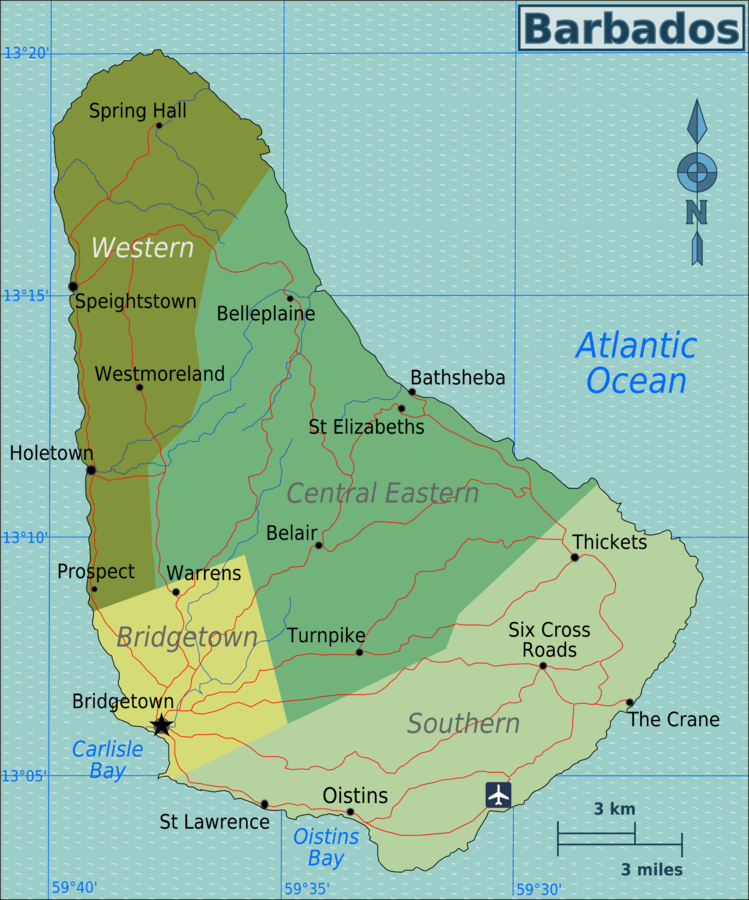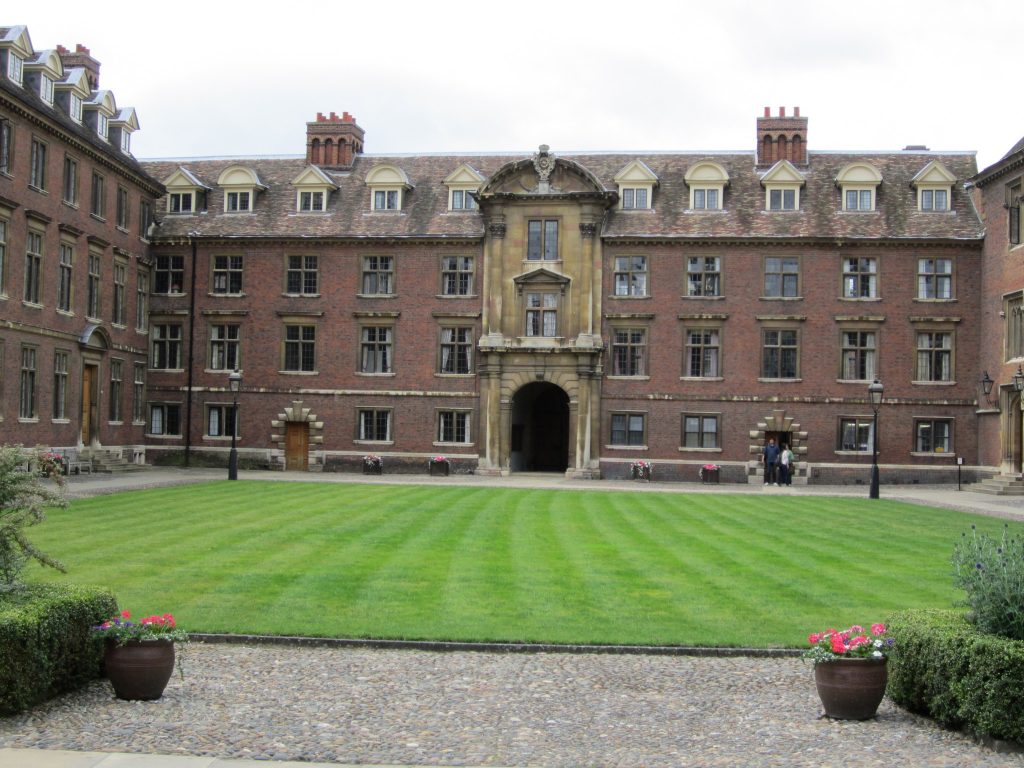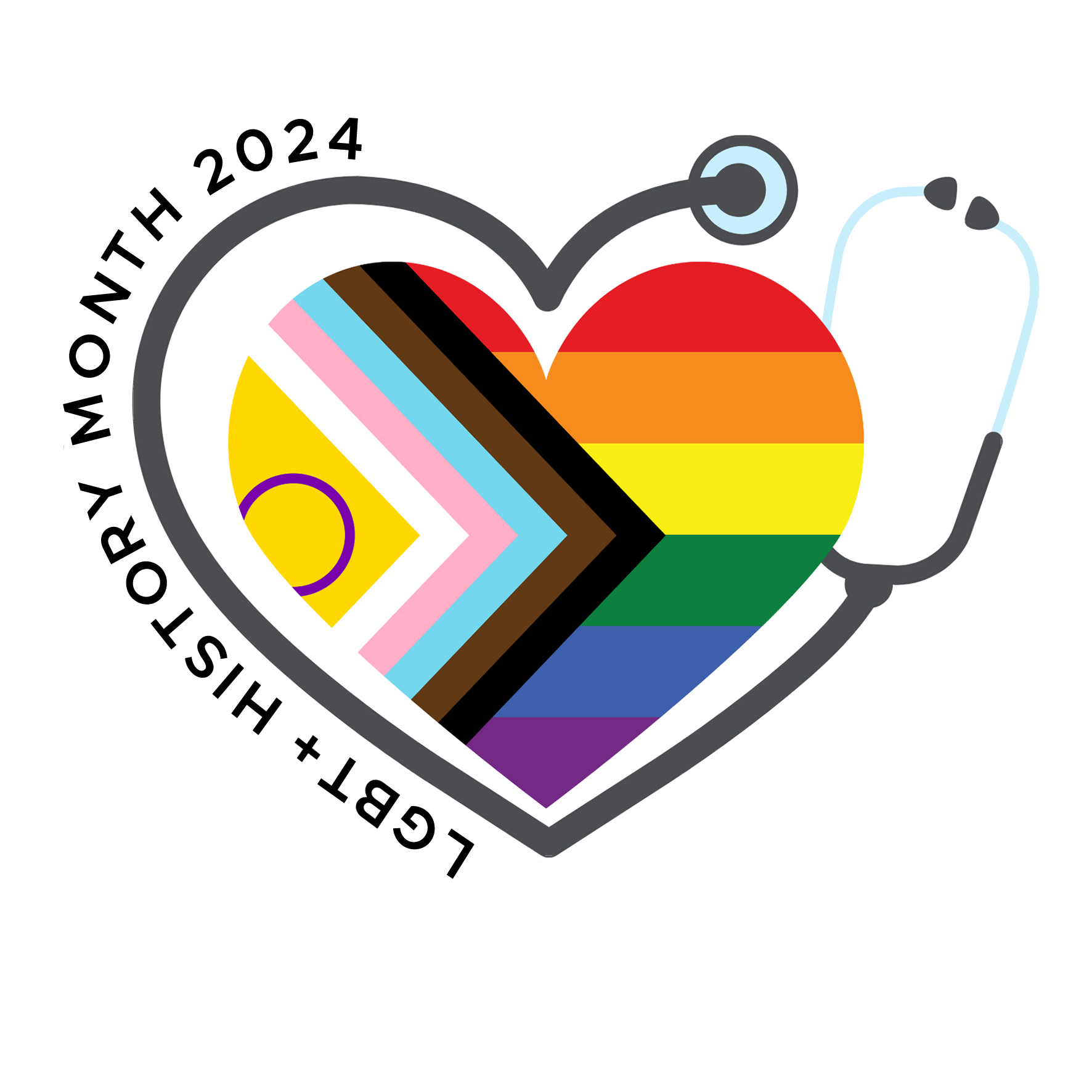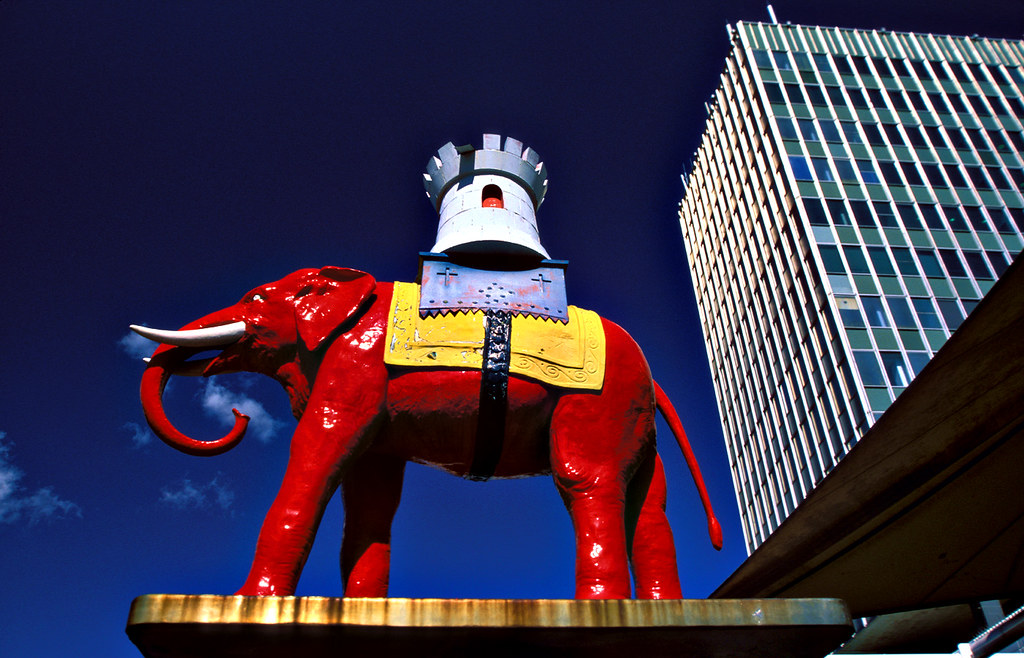Dr Cecil Belfield Clarke
Cecil Belfield Clarke was a student, educator, doctor, inventor and international campaigner for the people, for those from the African nations. He spent his entire life supporting those near and far; he has been praised within the Black History Month 2023 campaign, now its time to celebrate his life as part of the LGBT+ campaign.
Who was Cecil Belfield Clarke?
Cecil Belfield Clarke was born in 1894, on the Eastern Caribbean island of Barbados. Very little is known about Dr Clarke in his early years. It’s possible that he spent some of his youth in or around the capital city of Bridgetown, as he attended Combermere school. The school was ‘perhaps the first school anywhere to offer secondary education to black children’ (Sandiford, 1998, p. 106). It is also thought that it is one of the oldest schools in the Caribbean.


Regional map of Barbados by Burmesedays from Wiki voyage: Diving in Barbados used under CC BY-SA 3.0
Flag of Barbados by Cloudcounter from Wikimedia Commons used under CCO 1.0 Universal Public Domain Dedication
A medical education
Dr Clarke had a strong desire to continue his education, so Combermere school awarded him with an island scholarship, providing an opportunity to study medicine. Dr Clarke applied and was accepted to attend St Catharine’s College, University of Cambridge. Working hard, Dr Clarke would go on to achieve ‘First Class in the Natural Sciences Tripos in 1917’ (https://www.caths.cam.ac.uk/about-us/history/black-history/c-b-clarke, 2023). This would be followed by additional studies at University College, London.
The Belfield Clarke Prize
In the latter half of Dr Clarke’s career, in 1952, he approached St Catharine’s College with the hope of initiating a new award for students in the natural sciences. In 1955 the first recipient was chosen, the ‘Belfield Clarke Prize for Natural Science: Mr D.S. Smith’ as announced by St Catharine’s College (1955). It is also worth noting that the Belfield Clarke Prize is ‘still awarded to students in Biological Natural Sciences Tripos examinations’ to this very day (Soverall, (2020).
St Catharine’s College President
Throughout his life, many years after he had graduated, Dr Clarke was still extremely dedicated to the college, its students and their education. This commitment to the college and the Belfield Clarke Prize ‘culminated in his unanimous election as President of the St Catharine’s College Society (1965-66)’ as stated in (Dr Cecil Belfield Clarke plaque unveiling: Black History Walks, 2023).

St Catharine’s College, Cambridge, England by Rept0n1x from Wikimedia Commons used under 3.0 Unported
Belfield Clarke Bursary Fund
Almost thirty years after Dr Clarke’s death, his lifelong partner passed away and bequeathed a sum of £130,000 to St Catharine’s College, ‘to be used at the college’s discretion in the provision of scholarships or annual prizes in Social Sciences, in memory of Dr Cecil Belfield Clarke’ (St Catharine’s College Ordinances, 2023). Their home was also donated to the college – this went towards additional funding for the Belfield Prize.
Belfield House
St Catharine’s College have recently been updating and re-building on what is called the St Chad’s site. In 2023 they unveiled two new student accommodation buildings, one being called ‘Belfield House’ in honour of Dr Cecil Belfield Clarke.
A medical career
In 1921, at the completion of Dr Clarke’s studies, he made the decision to remain in the United Kingdom and chose to setup his own medical practice in Southwark, London, close to Elephant and Castle. His family GP practice was established at 112 Newington Causeway: It was here that Dr Clarke dedicated almost fifty years of his life to providing medical assistance and supporting those within the community.
Elephant and Castle by laszlo-photo from Wikipedia used under CC BY 2.0
District Medical Officer, London
Dr Clarke was well established and known in London, during his lifetime. By 1936, he was truly recognised for the medical work he had undertaken when he was appointed as a District Medical Officer. Dr Clarke was ‘reported to be the first Black man to hold this post in the whole of London County council at the time’ (B:M2024, 2023), which is a huge achievement.
However, he didn’t stop here, he was also known internationally for his work in medical aid in the West Indies and Ghana. By the 1950’s, he had been officially recognised by both places. He became a representative of the West Indies through his involvement with the Council of the British Medical Association and was nominated as a Medical Adviser to the government of Ghana, eventually becoming Senior Medical Officer.
Clarke’s/Clark’s Rule
Through research and study, Dr Clarke eventually established Clarke’s/Clark’s Rule, a mathematical formula that would go on to help physicians around the world prescribe the correct amount of medication to children in relation to their body mass.
(Weight* divided by 150 lbs.) x Adult Dose** = Paediatric Dosage
(Weight*** divided by 68 kg) x Adult dose** = Paediatric Dosage
*Weight of paediatric patient in pounds (lbs.)
**Adult dose is the recommended dosage for adult medication use
***Weight of paediatric patient in kilograms (kg)
Delgado, B. J, Safadi, A. O and Bajaj, T. (2023)
Very little evidence remains that details the exploration and creation of this crucial piece of medical history. There is no known date of the introduction of Clarke’s Rule and it can be difficult to find a link with Clarke himself, as his name is often misspelt , by removing the ‘e’ from Clarke. However, the importance of Clarke’s Rule can still be seen today, ‘for doctors and other healthcare professionals, ‘Clark’s Rule’ is a well established aspect of paediatric medicine’ (Tonkin, (2023).
World War II
During the war, London was subject to enormous amounts of damage, caused by regular attacks of German Bombers. Elephant and Castle and, the surrounding areas, were regularly hit. However, Dr Clarke still made the journey to his practice every day, making sure a medical service was always available.
‘The worst air raid to hit Elephant and Castle took place on 10-11th May 1941, when German Bombers targeted the area to create a terrible fire storm. Much of elephant and Castle lay in ruins, a shadow of its pre-war days. Miraculously, Dr Clarke’s surgery survived.’
(Bourne, 2020, p. 137)
The Colonial Advisory Medical Committee
His Majesty’s Colonial Service enabled the British Government to oversee British Overseas Territories, administering public services to the people. This included professions within educational, legal, administrative and medical practices. Dr Clarke served as an adviser within the Colonial Advisory Medical Committee, under the Secretary of State for the colonies. This provided Dr Clarke with the opportunity to share his medical expertise with a wider international community.
Supporting the people
‘Dr Clarke was an activist and campaigner for civil rights’ (Narjee, 2022, p. 36) spending many years of his life helping both national and international students and minority groups. He supported students from West African countries, studying in the United Kingdom, through the student created ‘West African Students Union’ (WASU). He was ‘elected first Chairman of the House Committee of Aggrey House’ (https://www.caths.cam.ac.uk/about-us/history/black-history/c-b-clarke, 2023) a Georgian Terrace House, converted into a hostel for students of African descent.
Dr Clarke also became involved with the International African Service Bureau. The aim of the Bureau was to provide support for African communities living within the United Kingdom and, to raise awareness of issues impacting the African population and their homelands.
League of Coloured Peoples and ‘the Keys’
‘The League of Coloured People’ was established in the 1930s by physician Harold Moody. Dr Clarke was a key player in the creation of this group due to their close association with Moody through the medical profession and numerous civil rights campaigns, with a view of bringing international racial equality to the world. ‘The League of Coloured Peoples’ worked hard for approximately twenty years, raising awareness and providing support for those in need. A large amount of their time was spent trying to abolish the ‘colour bar’, a system in the United Kingdom that prevented non-white people having individuals access to facilities within the workplace and in their domestic lives.
‘The Keys’
‘the Keys’ was established several years after the formation of ‘The League of coloured Peoples’ and was designed to be a quarterly journal which would provide ‘the true facts on any issue of importance concerning people of colour in a fair, unbiased and dispassionate manner’ (Moody, 1931, quoted in https://britishnewspaperarchive.co.uk/titles/the-keys, 2024). The name, was a dedication to James Aggrey, a campaigner for equal rights who often presented the colour divide as a piano, with the best music being created through a mixed use of white and black piano keys, rather than one or the other.
Life, Love and Recognition
From the 1930s until his death in 1970, Dr Clarke shared his life and his home with Pat Walter. Pat was often identified as Dr Clarke’s assistant and would accompany him on many overseas trips and events. It would eventually be known that Pat Walker and Cecil Clarke were more than just colleagues, they were a couple. ‘According to Clarke’s contemporaries, he was known to be gay – at least among his immediate Black community’ (https://www.caths.cam.ac.uk/about-us/history/black-history/c-b-clarke, 2023).
Blue Plaque
It wasn’t until 2023, that Dr Cecil Belfield Clarke was truly celebrated, by the unveiling of a blue plaque honouring the late doctor, activist for minority rights, educator and creator. The plaque can be found on the building where Dr Clarke’s original surgery was located in elephant and Castle, London.
References
blackhistorywalks (2023) Dr Cecil Belfield Clarke plaque unveiling. 20th April 2023. Available at: https://www.youtube.com/watch?v=5dI73Ia-Ws8&t=14s (Accessed: 6th February 2024).
B:M2024 (2023) Dr Cecil Belfield Clarke plaque unveiling: Black History Walks. Available at: Dr Cecil Belfield Clarke plaque unveiling: Black History Walks – Black History Month 2023 (Accessed: 6th February 2024).
Bourne, S. (2020) Under fire: Black Britain in wartime 1939-45. Gloucestershire: The History Press.
Delgado, B. J, Safadi, A. O and Bajaj, T. (2023) ‘Clark’s Rule’, in StatPearls. Treasure Island (FL): StatPearls Publishing. Available from: https://www.ncbi.nlm.nih.gov/books/NBK541104/ (Accessed: 5 February 2024)
Dr Cecil Belfield Clarke plaque unveiling: Black History walks (2023) Available at: https://www.blackhistorymonth.org.uk/article/section/latest-events/dr-cecil-belfield-clarke-plaque-unveiling-black-history-walks/ (Accessed: 11th January 2024.
https://www.caths.cam.ac.uk/about-us/history/black-history/c-b-clarke(2023) (Accessed: 21 December 2023).
Narjee, L. (2022) Legacies: Black British Pioneers. 1st Edition. Great Britain: Dorling Kindersley Limited. The Black curriculum.
Sandiford, K. (1998) Cricket Nurseries of Colonial Barbados – the Elite Schools 1865-1966. Available at:https://books.google.com(Accessed: 21 December 2023).
Soverall, L. (2020) Southwark Heritage Blog: Dr Cecil Belfield (1894-1970). Available at: https://southwarkheritage.wordpress.com/2020/10/07/dr-cecil-belfield-clarke-1894-1970/ (Accessed: 11th January 2024).
St Catharine’s College. (1955) ‘Student awards’, St Catharine’s Society Magazine, September, Page 65.
St Catharine’s College Ordinances 2023 ( SI 2023/82(ii)/22 & 100(ii)/22). Available at: https://www.caths.cam.ac.uk/sites/default/files/12-05-23%20Ordinances.pdf (Accessed: 16 January 2024).
The British Newspaper Archive (2024) The Keys. Available at: https://britishnewspaperarchive.co.uk/titles/the-keys (Accessed: 6th February 2024).
Tonkin, T. (2023) ‘A forgotten hero’, The Doctor, 55, pp.18-19. Available at: https://issuu.com/thebma/docs/20230296_the_doctor_magazine_issue_55_may_2023/18(Accessed: 8 January 2024)
Featured image created by Schools Out for free educational use.
 Library
Library Jason Shirley
Jason Shirley 1882
1882



